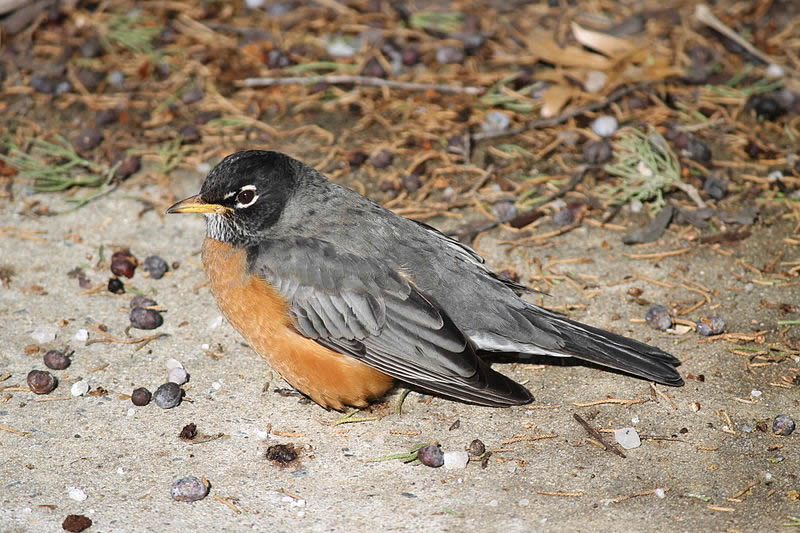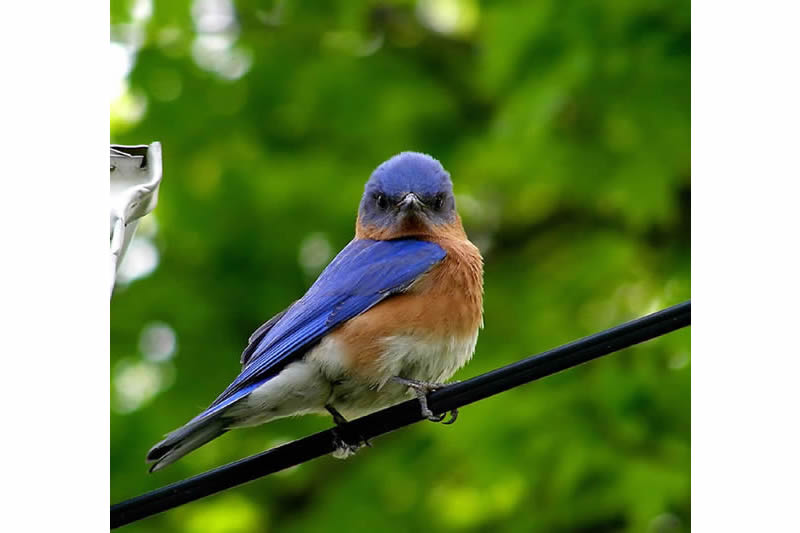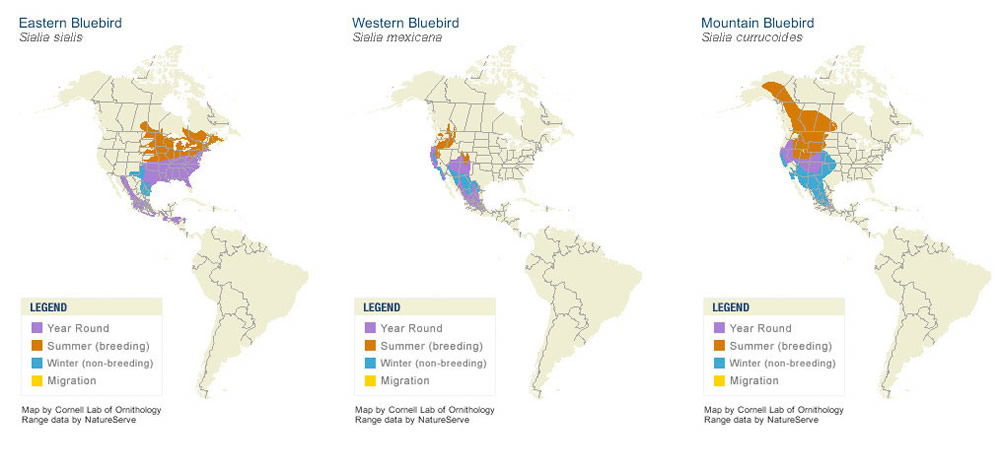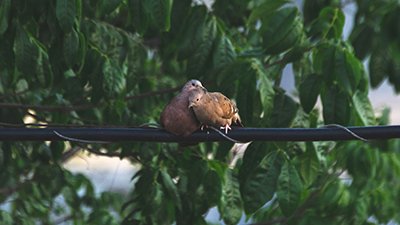Bird Speciation from the Flood to the Present
Introduction
Birds are remarkable creatures that capture the amazement of just about anyone who takes time to observe them. From watching an eagle soar to staring at a hummingbird hovering in front of a flower, the colors and behaviors of birds display beauty and complexity that bring awe to the observer. Almost everyone notices birds, but some people specialize in looking for birds. Bird watchers (also called birders) make time to look for birds in their natural habitats. Birders are known for keeping lists of birds they have seen, and enjoy going on expeditions to look for bird species not on their “life list” (birders have daily lists, monthly lists, and yearly lists too). My life list is relatively short, only about 150 different species, but I have a goal to reach over 200 by the end of this year.
Ornithologists estimate the diversity of living bird species in the entire world to be around 10,380.1 (I have a long way to go on my life list). That number almost doubles the number of extant mammal species (5,416)2 and is almost 3,000 more than extant amphibian species (7,509).3 The number of reptile species is the closest to the bird number with a current count of 10,272 extant species.4 Because most of these vertebrates are terrestrial, we have about 33,500 different species of terrestrial vertebrates on earth today. I am leaving out the aquatic vertebrates (mainly the fishes) because they would not have been represented on the Ark (33,200 fish species have been described,5 and the implications of that are important for creation scientists who are trying to model the diversity of all life from the Flood to the present).
How Did All Those Animals Fit on the Ark?
The answer to this question is more easily answered once we distinguish between biblical kinds and species. In Genesis 6:1–20 we read that Noah was commanded to take two of every animal kind into the Ark. Verse 20 makes clear that those animals would include two of every kind of bird. Later, God clarified that seven individuals of the clean animals, including some birds, would be on the Ark (Genesis 7:2–3). Does that mean that Noah had two (or seven) of all 10,380 extant bird species (more if you count extinct species)? If a biblical kind and a species were equivalent, then yes. But they are not the same; many species are categorized under each biblical kind.
So those who believe the biblical account of the worldwide Flood (including the survival of Noah and his family and the survival of terrestrial animals on the Ark) seek to find the answer, rather, to this question: where did all these different species of terrestrial animals that we see today come from? For our consideration here, we are going to narrow the question to, where did all these bird species that we see today come from?
To help answer that question, we are aware that evolutionary scientists have recently compiled genetic and fossil evidence to suggest that flying birds originated from a group of dinosaurs in South America about 95 million years ago.6 Using their data, the scientists suggested that flying birds began radiating and diversifying over the world after a huge meteor struck near the Yucatan Peninsula 66 million years ago. The subsequent disaster of that meteor has been suggested as the main cause for the extinction of dinosaurs. Using this model, evolutionary scientists attempt to demonstrate that all birds in existence today descended from one common ancestor of the dinosaur lineage.
The two answers given by evolutionary scientists and creation scientists are so far apart from one another that it seems almost impossible to think that they are looking at the same data.
Scientists who accept the biblical account of creation and the worldwide Flood compile evidence from Scripture, genetics, the fossil record, hybridization data, and morphological characteristics to suggest that God created many kinds of birds that began radiating and diversifying over the world after the worldwide Flood destroyed the earth about 4,500 years ago. These birds included both flying and non-flying birds. The two answers given by evolutionary scientists and creation scientists are so far apart from one another that it seems almost impossible to think that they are looking at the same data.
One of the key factors to keep in mind when interpreting the evidence from genetics, the fossil record, and so on is that all scientists interpret the evidence through the lens of their worldview—their foundational belief system. A scientist with a materialistic worldview has to account for the first bird; it would have to be the ancestor of all birds. Models of speciation and radiation for events like that would need millions of years.
A scientist with a biblical worldview has to account for the different species of birds found today in each created bird kind from the Flood to the present. Models of speciation and radiation for those events would only need thousands of years.
Dr. Jean Lightner has conservatively estimated that birds are comprised of about 196 created kinds.7 If we round that up to 200 bird kinds, we could account for all 10,380 extant species by each species diverging into two species just once every 750 years—just six times (200 to 400 to 800 to 1,600 to 3,200 to 6,400 to 12,800). That would even give us 2,420 more bird species to account for some extinction events. That is a very simplistic view and does not account for many variables, but it does provide us with a quick way to estimate if simple speciation (doubling) could account for all the birds we have today.
Dr. Lightner presents a more realistic view, demonstrating how to determine what constitutes a bird kind (hybridization and cognitum). Her research points out some disparate species numbers among the bird kinds. For example, the anhinga kind has only four species (the United States’ only species of anhinga is called the snakebird because it often swims in the water with only its head and neck out of the water, resembling a swimming snake), but the sparrow/finch kind (which includes not only sparrows and finches, but also cardinals, orioles, blackbirds, and so on) includes 1,471 extant species (that is 14% of all bird species)!8 Realistically, some bird kinds have not diversified into very many species since the Flood, yet some diversified quickly and multitudinously.

What Is a Species?
How do we know there are only four species of anhinga and close to 1,500 species of sparrows/finches? The more fundamental question is, what exactly is a species? If we know what constitutes a species, then we can analyze the process of speciation and determine how speciation fits in with the biblical account of creation. Because bird species reproduce sexually, they can be classified using the biological species concept. A group of sexually reproducing organisms that produce viable offspring is considered a biological species. Often this definition is clarified with the phrase “potentially reproducing” because individuals of the same species do not all have an opportunity to mate (e.g., live in different geographic locations or are reproductively active at different times of the year) Organisms that reproduce asexually may be considered species based on morphological, biochemical, or other standards.
Robins produce more robins. Bluebirds produce bluebirds. Could a male robin and a female bluebird produce a hybrid like a bluebin? No, they are different biological species. Some birds like the mallard duck and the American black duck are considered different species, but they can mate and produce offspring (unoriginally, they are called the mallard X American black duck hybrid). Does that mean that they are just one species and not two? Not really (though it does depend on who you ask), because the hybrid duck is rare, and most often a mallard mates with a mallard to get more mallards. (When a bird watcher sees a hybrid, he might get either a little too excited or just confused because what he sees does not quite match any pictures in his bird guide.)
What Is Speciation?
The examples of robins with bluebirds and mallards with black ducks help with a discussion of the speciation process. All sexually reproducing organisms display a huge amount of variation in many of their traits. Bill length, plumage coloration, vocalization, and longevity are just a few of the characteristics that vary in a bird species. That variation is the result of different alleles for the genes that code for those traits. Those alleles get shuffled around during the process of gamete formation (eggs and sperm) so that no two individuals of a single species (except for identical twins) share the exact combination of alleles—that is, all individuals of a particular species have a genetic makeup that is different from all other individuals.
Some of the varying traits can help individuals within a species to thrive in certain environments and pass on those thriving alleles to their offspring more than individuals with other traits. Because of these differences, different geographic populations can arise which no longer interbreed. If that separation of populations last for many generations (say 750 years!), then the populations might have diverged enough so that, if they came into contact, viable offspring would be impossible. That would mean that the first species has undergone speciation and at least two species now exist. If populations can thrive in many environments, then after enough time, one species could actually become many species.
Is this happening today, and how does this fit in with the Flood and the subsequent movement of birds around the globe after the Flood? The process of speciation usually includes some type of barrier to reproduction, such as geography or range of habitats. Let’s look at an example from two species of thrushes—the American robin and the eastern bluebird.9

American robin. Image by PookieFugglestein, via Wikimedia Commons.

Eastern bluebird. Image by Flying822, via Wikimedia Commons.
These birds live in many of the same habitats and likely descended from the same group of thrushes off the Ark. They are definitely two different species because they cannot mate and produce viable offspring.
However, the eastern bluebird and the mountain bluebird can mate and produce hybrids, but only where their habitats overlap. These two species do not share the same geographic location for most of their range, but both are thriving in their own geographic locations. The eastern bluebird is found from the east coast of the United States all the way to the western side of Texas and from Florida to the southern part of Canada. That is a huge area, and many different populations of eastern bluebirds live there. The mountain bluebird lives from the west coast to Texas and from the southern part of Mexico all the way up to Alaska! However, the ranges of these two species of bluebirds overlap only in a narrow band from West Texas northward—the hybrid zone. Most eastern bluebirds would never even come in contact with a western bluebird because their habitats don’t overlap very much. Because they are from the same bird kind and are obviously very similar (in both appearance and genetics) we can see that they are in the final stages of speciation. Most people believe that they are different enough to call them two separate species. If we include the western bluebird, which also can hybridize with these two species,10 it means that one species is in the final process of a triplet speciation event.

Images courtesy of Pat Leonard, via AllAboutBirds.org.
How Does Noah’s Ark Fit In?
To some people, what I just described sounds too much like evolution. The evolutionary process definitely includes the idea of speciation, but the formation of species in response to geographic (or habitat) differences is consistent with a biblical worldview. Having over 10,000 different species of birds (not to mention mammals, reptiles, and amphibians), especially two of every kind and seven of the clean animals (many of the birds), would have been too much for Noah and his family to care for—not to mention house. The efforts of those involved with the Ark Encounter are providing us with realistic figures about the number of animals on the Ark. Having two of every bird kind and seven of every clean bird kind fits nicely.11
When the birds were released from the Ark, they faced a new environment with quickly developing habitats. Birds could migrate quickly from the location of the Ark in all directions. As they were faced with different environments, their inbuilt genetic variability allowed them to diversify and adapt to these environments, forming different populations of the same bird kind. Let's look at one example.
If we follow the thrush kind out of the Ark, they could quickly scatter in many different directions. As they reproduced and their populations grew, they would find habitats that fit their needs. The variation potential in the Ark population would be displayed when different populations settled into different habitats. The populations would continue to grow and the variations inherent in their populations would allow them to quickly adapt to the new and developing habitats around the world. New species would form as geographic barriers isolated different populations.
Eventually one of the populations of the thrush kind that migrated to what is now North America has diversified into at least three species of bluebirds. One species is thriving in eastern North America, and the other two species are thriving in western North America. However, these three species can hybridize where their populations overlap, which indicates that the speciation process is not complete. However, if I ever see a mountain bluebird or a western bluebird, you can guarantee that I will put them on my life list as different species.
That was following just one lineage of the thrush kind. Now think of other lineages to other regions of the world. Then add to that all the other bird kinds, all originating from the Ark and migrating away from the modern day country of Turkey or one of the surrounding countries in the region. Variation among all the populations enabled spreading into various habitats in which to thrive. Populations continued diversifying as new habitats become available, thriving in those newer locations and filling the earth with birds and more birds so that today we have over 10,000 birds to enjoy and to add to our bird list.
Evolutionary scientists argue for a South American origination for all flying birds. The evidence they use is interpreted through their worldview and might be satisfactory to them; however, creation scientists argue for the northern regions of the Middle East. Evolutionary scientists argue for one ancestor to all flying birds—a descendant of the dinosaurs (that means if you are consistent with the evolutionary worldview, by the way, that birds are reptiles). Creation scientists argue for many different bird kinds that could fly from their creation on Day Five, as Genesis 1 clearly describes. Evolutionary scientists need millions of years, while creation scientists can show that within a few thousand years, the birds we see and enjoy today diversified from those birds that came off the Ark.
Footnotes
- Handbook of the Birds of the World Alive, http://www.hbw.com/.
- Don E. Wilson and DeeAnn M. Reeder, eds. Mammal Species of the World, 3rd ed. Baltimore, MD: Johns Hopkins University Press, 2005. An online database for the book can be found at http://vertebrates.si.edu/msw/mswCFApp/msw/index.cfm.
- “AmphibiaWeb Species Numbers,” AmphibiaWeb, http://amphibiaweb.org/amphibian/speciesnums.html.
- “Species Numbers (as of Aug 2015),” Reptile-Database, http://www.reptile-database.org/db-info/SpeciesStat.html.
- Fish Base, http://www.FishBase.org.
- Santiago Claramunt and Joel Cracraft, “A New Time Tree Reveals Earth History’s Imprint on the Evolution of Modern Birds,” Science Advances 1, no. 11 (2015): doi:10.1126/sciadv.1501005.
- Jean Lightner, “An Initial Estimate of Avian Ark Kinds,” Answers Research Journal 6 (2013): https://answersingenesis.org/creation-science/baraminology/an-initial-estimate-of-avian-ark-kinds/.
- Ibid.
- Ibid.
- Eugene M. McCarthy, Handbook of Avian Hybrids of the World (Oxford: Oxford University Press, 2006), 238.
- Jean Lightner, “An Initial Estimate of Avian Ark Kinds.”
Recommended Resources

Answers in Genesis is an apologetics ministry, dedicated to helping Christians defend their faith and proclaim the good news of Jesus Christ.
- Customer Service 800.778.3390
- © 2024 Answers in Genesis







